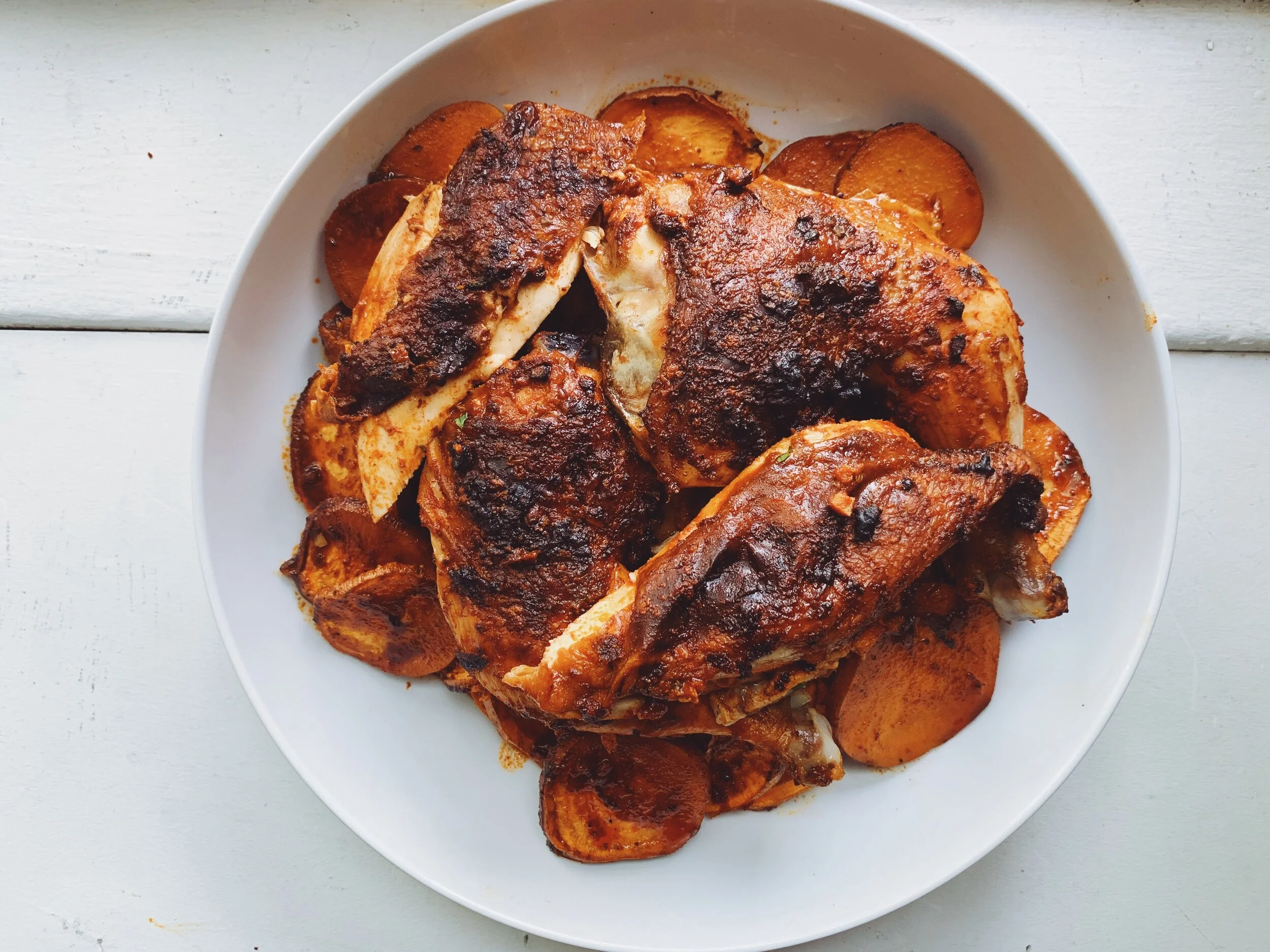One of the things I miss most about pre-pandemic life is getting to see my work friends in Chicago. My team is based in Toronto, Chicago and Montreal, and normally we would see each other every few weeks in person. The past few years I would go to Chicago 3-4 times a year, and I absolutely adore the city and its food scene. Some of the best meals I’ve ever had were in Chicago. The Girl & the Goat (+ every Stephanie Izard restaurant), avec, Monteverde, Publican, Topolobampo, Au Cheval, the list goes on!
On one of my last trips there in 2019 I went to avec with my work friend for dinner. It now feels like a totally different world - narrow, crowded restaurant, bench style tables that you share with other parties basically nudging each other's elbows. When we arrived my friend said we had to get the stuffed dates to start. Reading the menu I was so intrigued. I’d had bacon wrapped dates before, I’d had bacon wrapped water chestnuts too, but the idea of dates with chorizo and bacon AND spicy marinara seemed so out of the box to me. These were not things I would think to combine. When I took my first bite my mind was blown and that food memory is forever etched in my mind. The chorizo and marinara bring a spicy heat, the dates become sticky sweet, and the bacon ties it all together with saltiness and smoke.
This recipe is my rustic interpretation of that dish. If you look at avec’s Instagram you’ll see perfectly wrapped dates, glistening in sauce. These are a bit more home-y, but the flavour is all there. These would work as an appetizer or can hold up as a main. The recipe is flexible based on how many dates you have.
A few tips:
Chorizo sausage: you want to buy fresh sausages for this recipe, not dry-cured. Most grocery stores will have “Spanish-style chorizo” in the sausage section, but if you are able to go to your local butcher or sausage spot, I recommend getting them there!
Medjool dates: although they are more expensive than regular dates, Medjool dates are key to get the sweet caramel flavour this recipe needs. They are a bit of a splurge but totally worth it for this recipe. You can get them at the grocery store, online, or at your local bulk store.
Bacon: If there was ever a time to splurge on bacon, this is one of them (although I personally think you should always splurge on bacon!). If you can get your bacon from a local butcher, that’s best. You want the thicker cut, double smoked if possible.
Serving tips: I love this with crusty bread to dip into the sauce. As a main, serve it with a bright, acidic salad (even just arugula with lemon juice and olive oil works!).
Chorizo Stuffed Dates with Bacon and Spicy Marinara
Serves 4-6 people as a main, 10-12 as an appetizer if you make them small!
15 min prep time, 60 mins cook time
Ingredients:
4 chorizo sausages (fresh - not cured)
12-20 Medjool dates
1 package good bacon (need 12-20 slices, or 6-10 cut in half)
Marinara sauce (notes below of how I make it from scratch if not using bottled)
Method:
Preheat oven to 375
Prepare a cookie sheet with parchment paper or a silicone mat.
Open your dates and remove the pit, flatten them by pressing with your thumbs and middle fingers, and set them aside
Remove sausage from casing and form into meatballs (same amount of meatballs as dates)
Place a meatball on each flattened date, wrapping the date around the meatball (depending on the size it might just cover half).
Wrap each “meatball date” in bacon, and place onto cookie sheet. If you have extra bacon leftover you can always put it onto the sheet to crisp up for a “chef snack” :)
Bake until meatballs are cooked through (165F internal temperature) - 45-60 mins depending on the size of the meatball.
Serve in marinara! I like to pour the pan drippings into the marinara sauce for extra flavour. Best served with crusty bread.
Spicy Marinara:
1/4 cup olive oil
1 white onion, finely diced
2 cloves of garlic, minced
1/2 tsp crushed red pepper
2 tbsp tomato paste
1 can tomatoes (794g) or bottle of crushed tomatoes (passata)
Heat oil in a saucepan over medium
Add onion and garlic, cook, until softened (5-7 mins)
Add crushed red pepper flakes and tomato paste, cook out for 2-3 mins
Add in tomatoes (if whole tomatoes, crush with your hands as you add-in)
Simmer on low, covered for 30 mins - 2 hours! Stir every once in a while to ensure it’s not burning on the bottom. Season to taste with salt and pepper.














